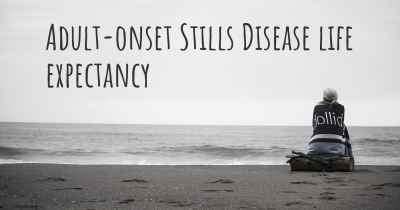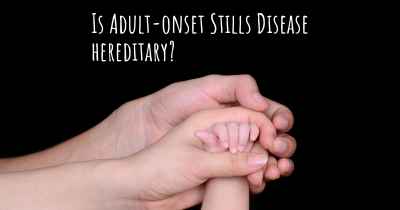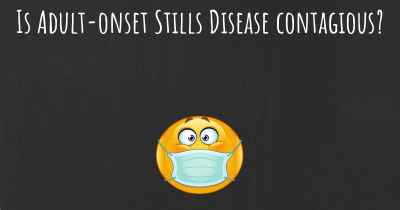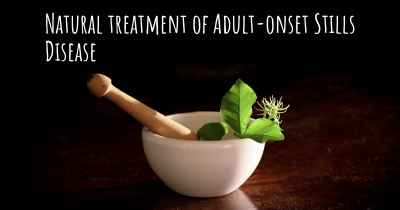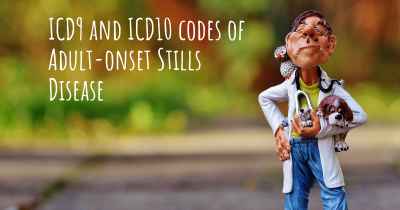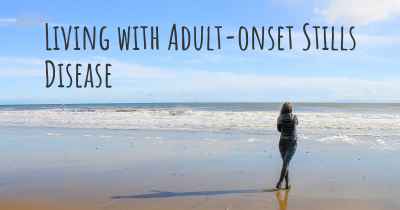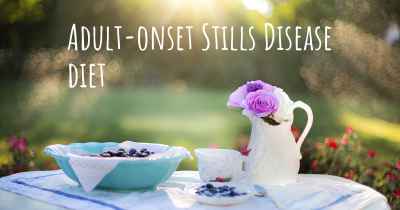Does Adult-onset Stills Disease have a cure?
Here you can see if Adult-onset Stills Disease has a cure or not yet. If there is no cure yet, is Adult-onset Stills Disease chronic? Will a cure soon be discovered?
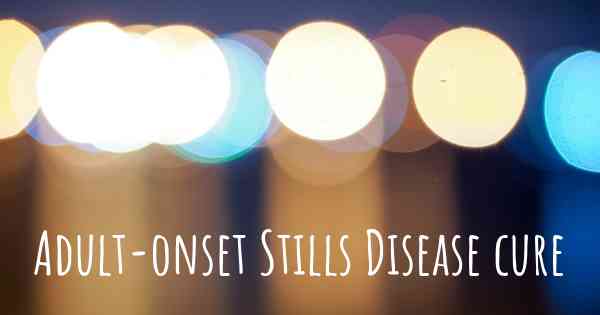
Adult-onset Still's Disease does not have a known cure. It is a rare inflammatory disorder that affects adults, causing symptoms such as high fever, joint pain, and rash. Treatment focuses on managing symptoms and reducing inflammation through medications like nonsteroidal anti-inflammatory drugs (NSAIDs), corticosteroids, and disease-modifying antirheumatic drugs (DMARDs). Regular medical care and monitoring are essential to help control the disease and improve quality of life for individuals with Adult-onset Still's Disease.
Does Adult-onset Still's Disease have a cure?
Adult-onset Still's Disease (AOSD) is a rare inflammatory disorder that primarily affects adults. It is characterized by high fevers, joint pain, rash, and systemic inflammation. While there is no known cure for AOSD, there are treatment options available to manage the symptoms and improve the quality of life for individuals with this condition.
Treatment for AOSD
The treatment approach for AOSD typically involves a combination of medications and supportive care. The primary goals of treatment are to reduce inflammation, control symptoms, and prevent complications. The specific treatment plan may vary depending on the severity of the disease and individual patient factors.
Nonsteroidal Anti-inflammatory Drugs (NSAIDs)
NSAIDs such as ibuprofen or naproxen are commonly used to relieve pain and reduce inflammation in AOSD. They can help manage joint pain and fever associated with the disease. However, NSAIDs alone may not be sufficient for controlling the systemic inflammation in more severe cases.
Corticosteroids
Corticosteroids, such as prednisone, are potent anti-inflammatory medications that can effectively reduce inflammation in AOSD. They are often prescribed in moderate to high doses during disease flares. However, long-term use of corticosteroids may lead to significant side effects, so their use is typically limited to short periods or in combination with other medications.
Disease-modifying Antirheumatic Drugs (DMARDs)
DMARDs, such as methotrexate or sulfasalazine, are commonly used in AOSD to control inflammation and prevent disease progression. These medications work by suppressing the immune system and reducing the production of inflammatory substances. DMARDs are often used in combination with corticosteroids to achieve better disease control.
Biologic Therapies
In more severe cases of AOSD that do not respond well to conventional treatments, biologic therapies may be considered. Biologics, such as interleukin-1 (IL-1) inhibitors or interleukin-6 (IL-6) inhibitors, target specific molecules involved in the inflammatory process. These medications can help reduce symptoms and improve overall disease control.
Supportive Care
In addition to medication, supportive care plays a crucial role in managing AOSD. This may include rest, physical therapy, and occupational therapy to maintain joint function and mobility. Regular follow-up with healthcare providers is important to monitor disease activity, adjust treatment as needed, and address any complications that may arise.
Conclusion
While there is currently no cure for Adult-onset Still's Disease, treatment options are available to manage symptoms and improve the quality of life for individuals with this condition. The treatment approach typically involves a combination of medications, including NSAIDs, corticosteroids, DMARDs, and biologic therapies. Supportive care and regular follow-up with healthcare providers are also essential components of managing AOSD. It is important for individuals with AOSD to work closely with their healthcare team to develop an individualized treatment plan that addresses their specific needs and goals.
Posted Feb 25, 2019 by Terry 2550
Posted Sep 29, 2019 by Jenifer E 4550
For some people, the condition can ‘go away’ and flare ups can cease to exist. It is possible for prolonged remission, however for others it can be a battle of constant flare ups. It’s different for everyone.
Posted Jan 21, 2021 by Lina 850
Posted Oct 18, 2017 by Paula Andrea 2750
